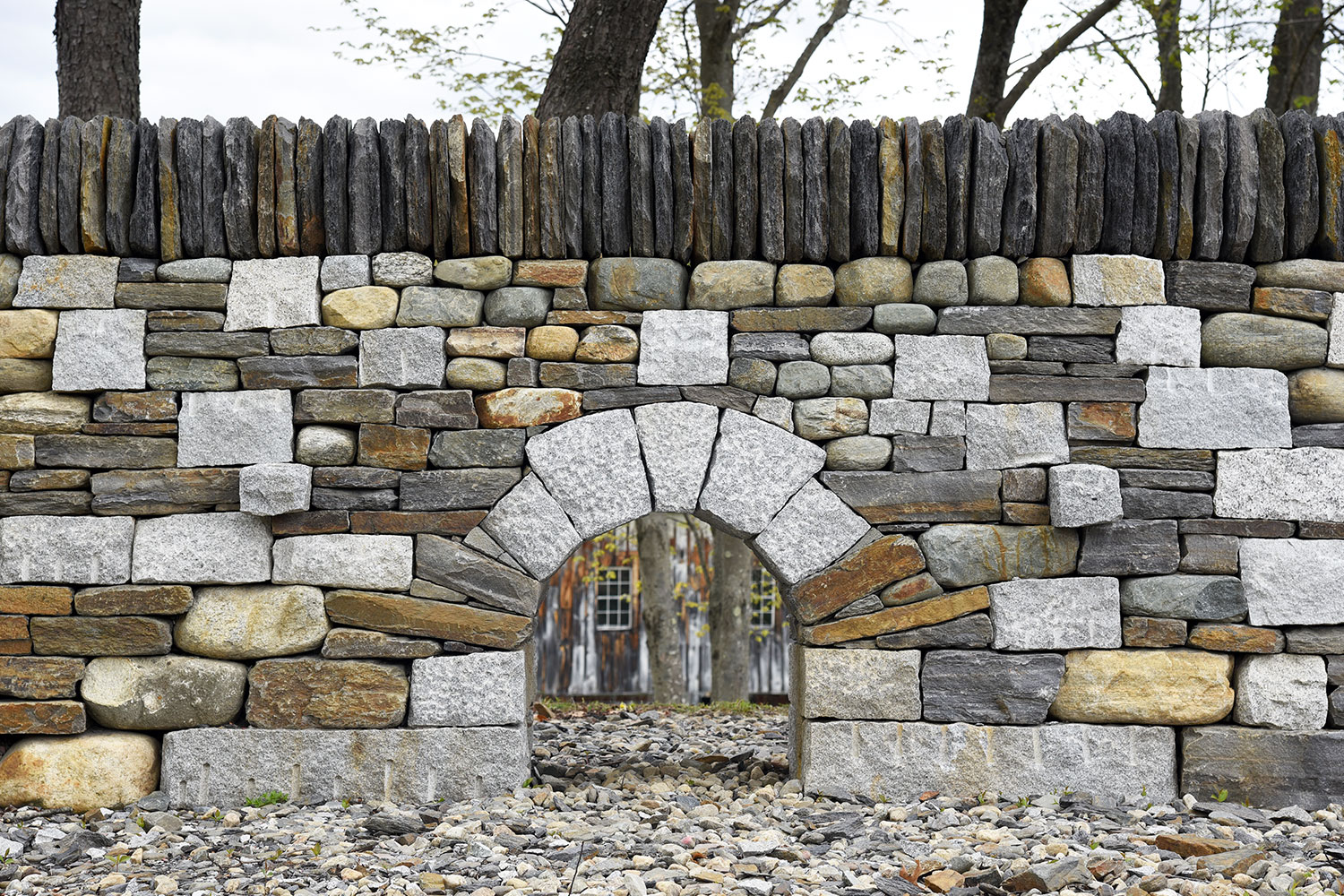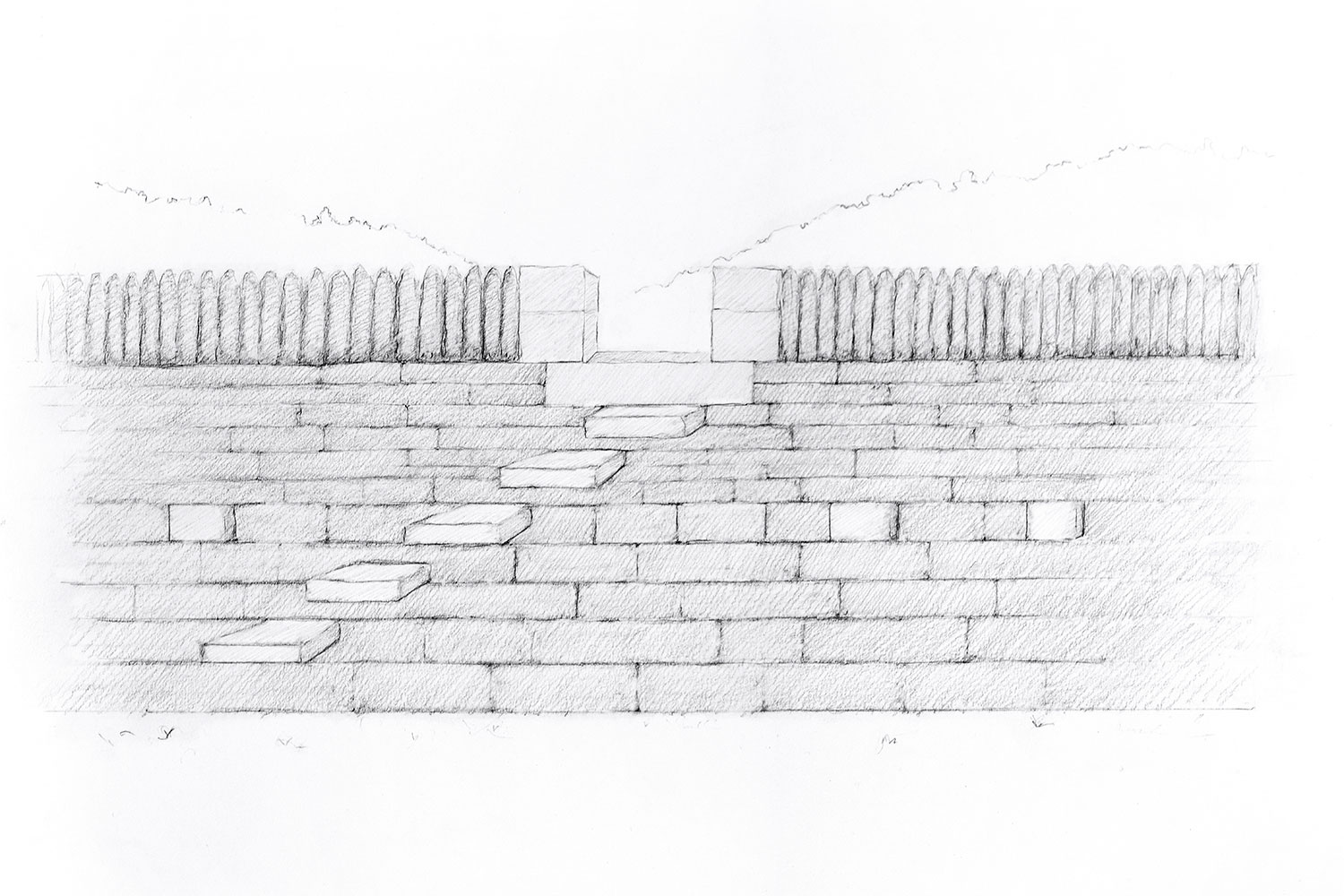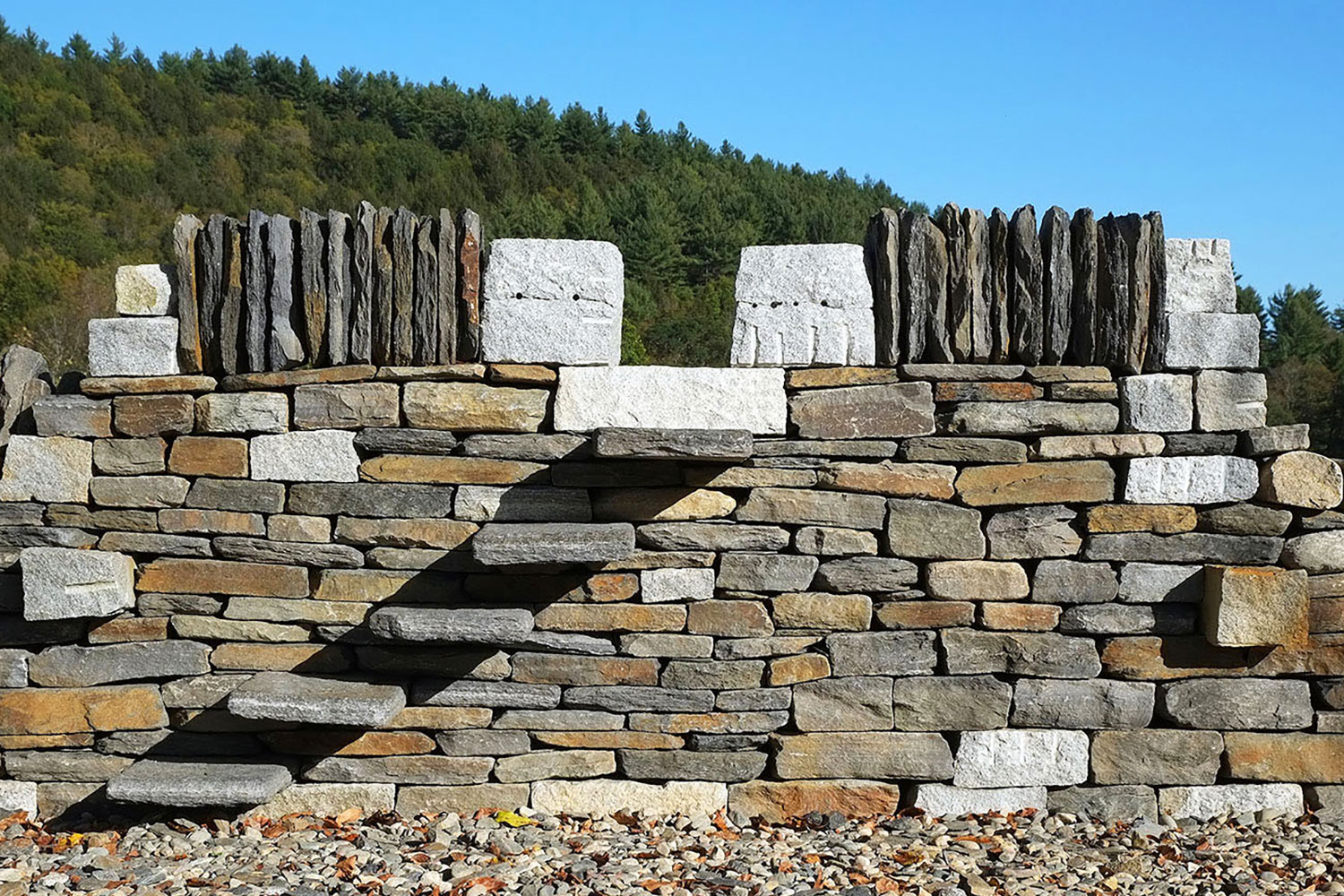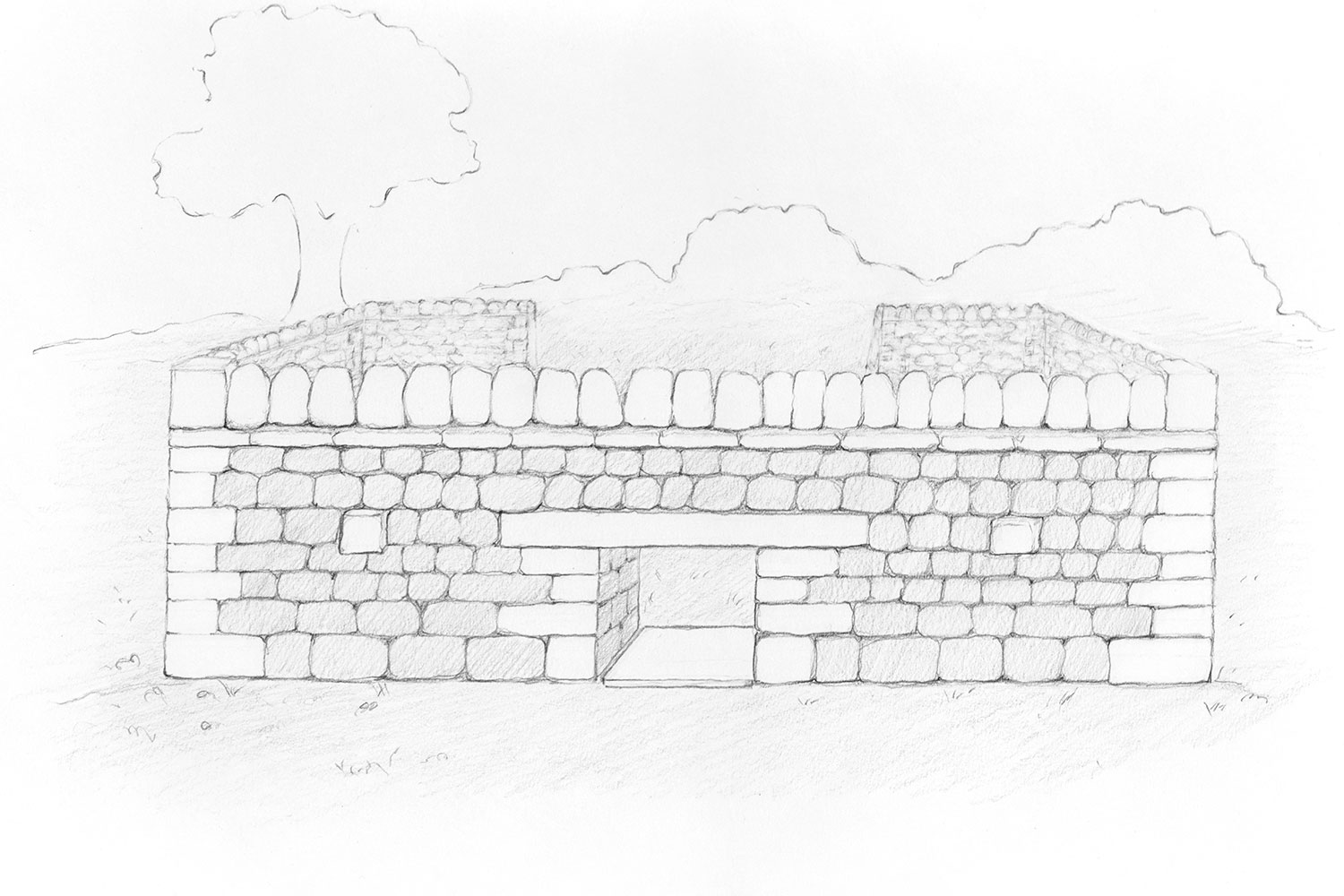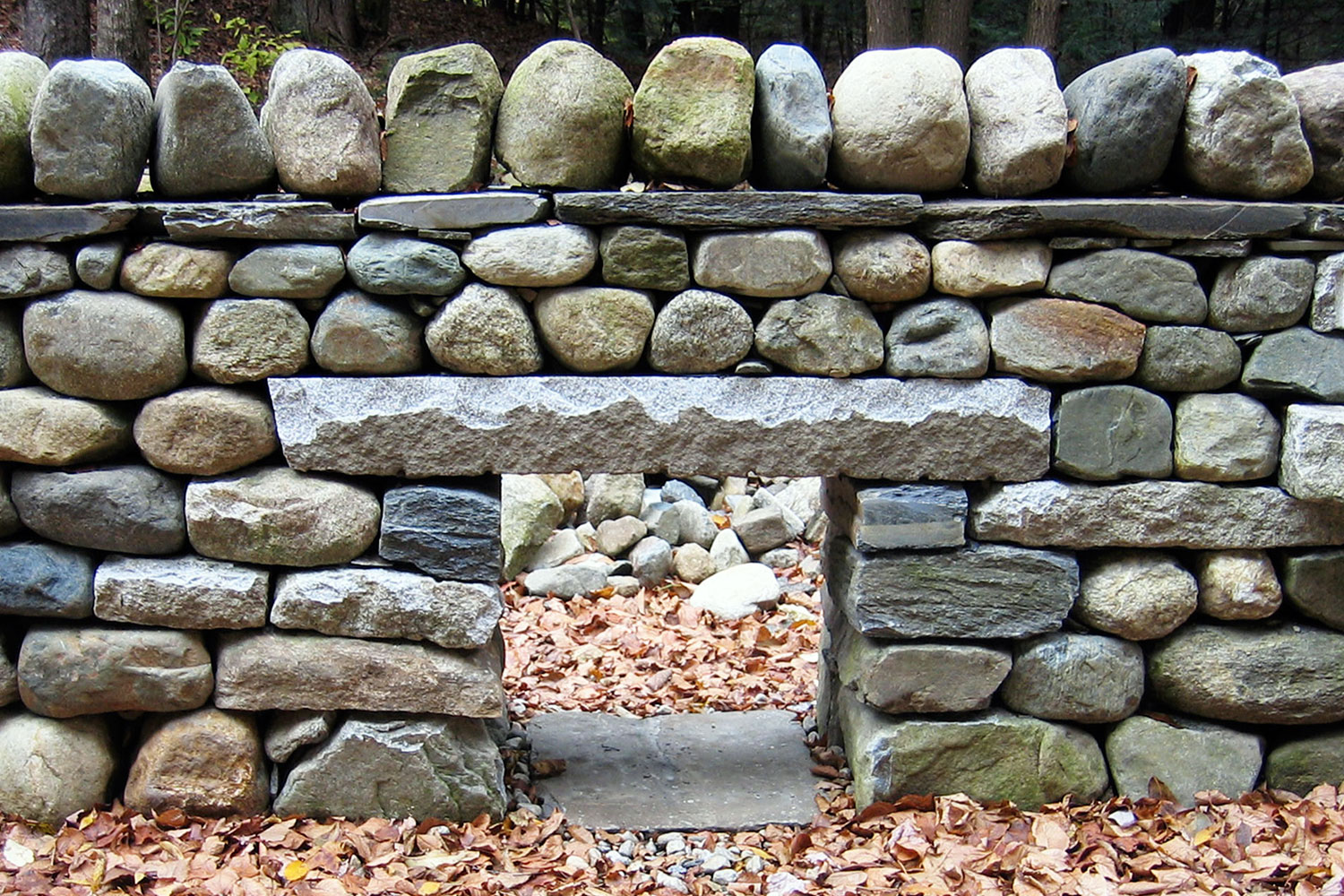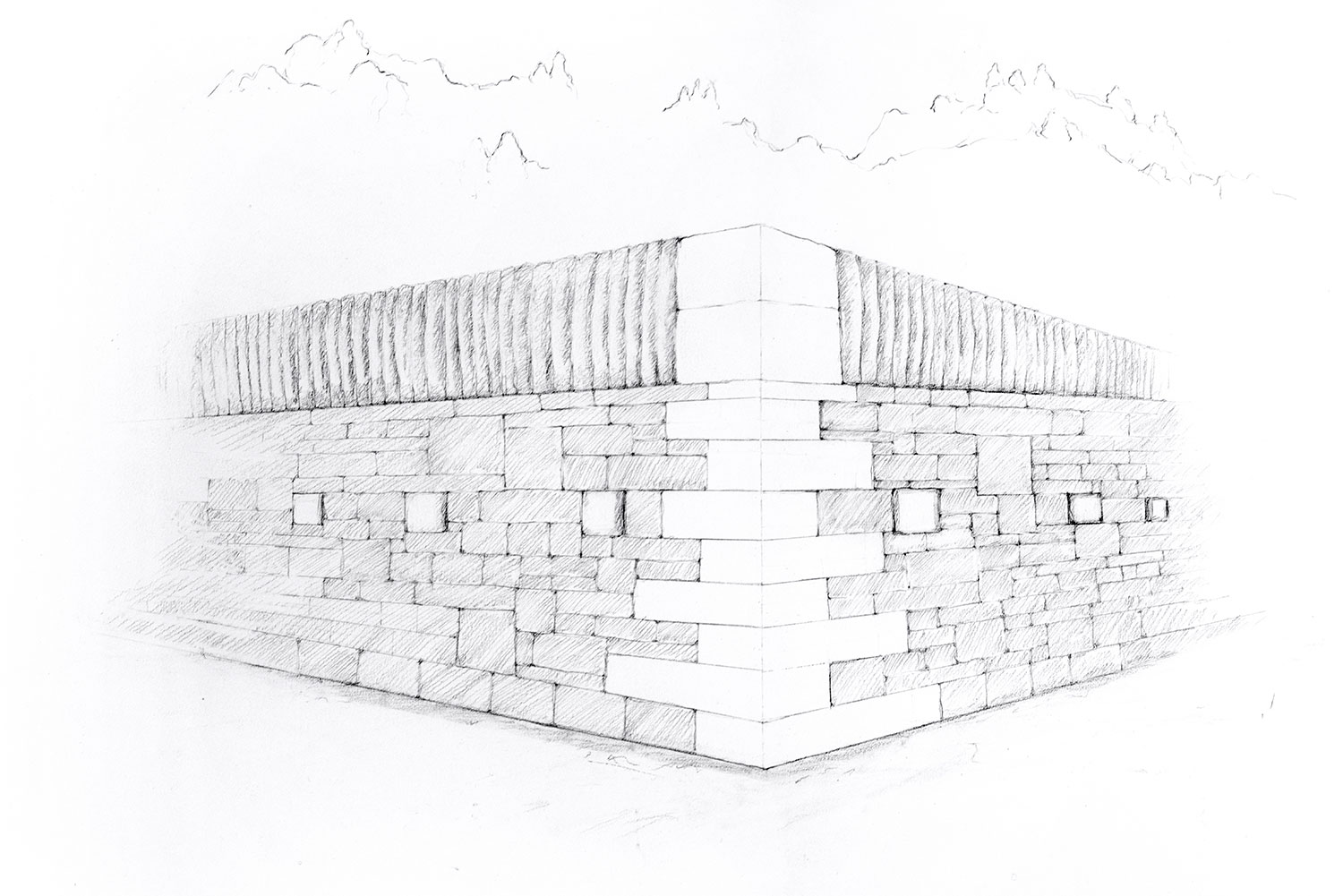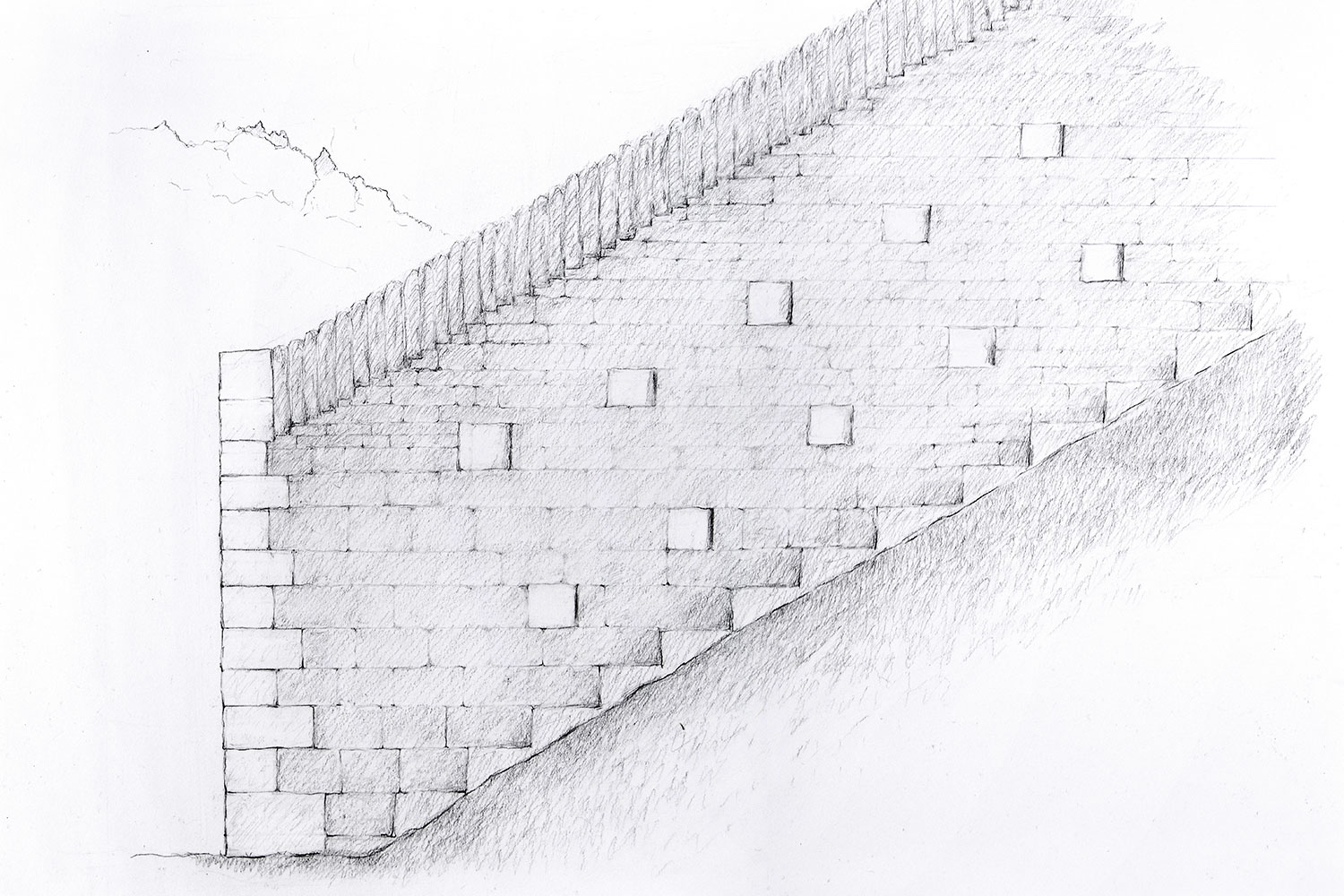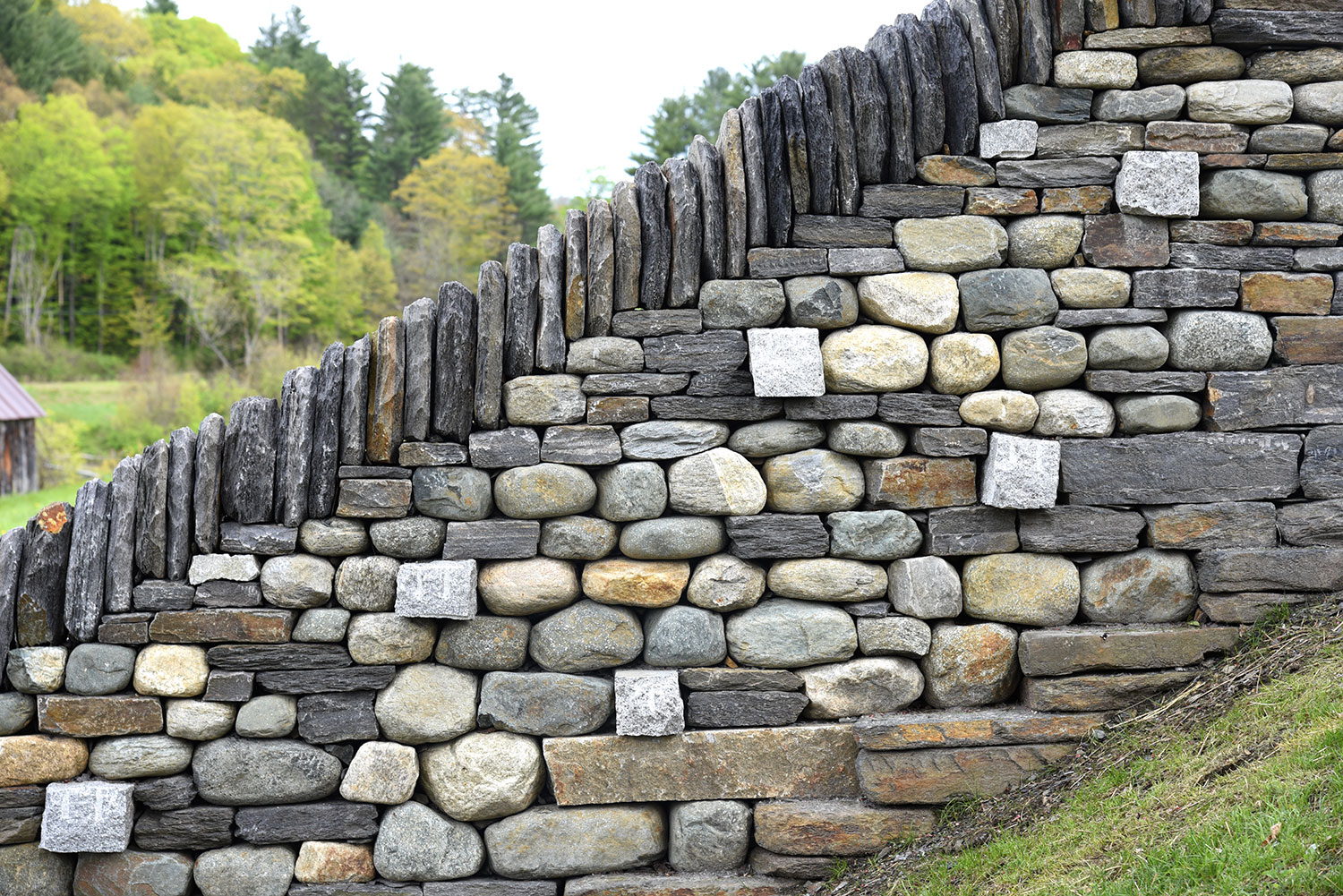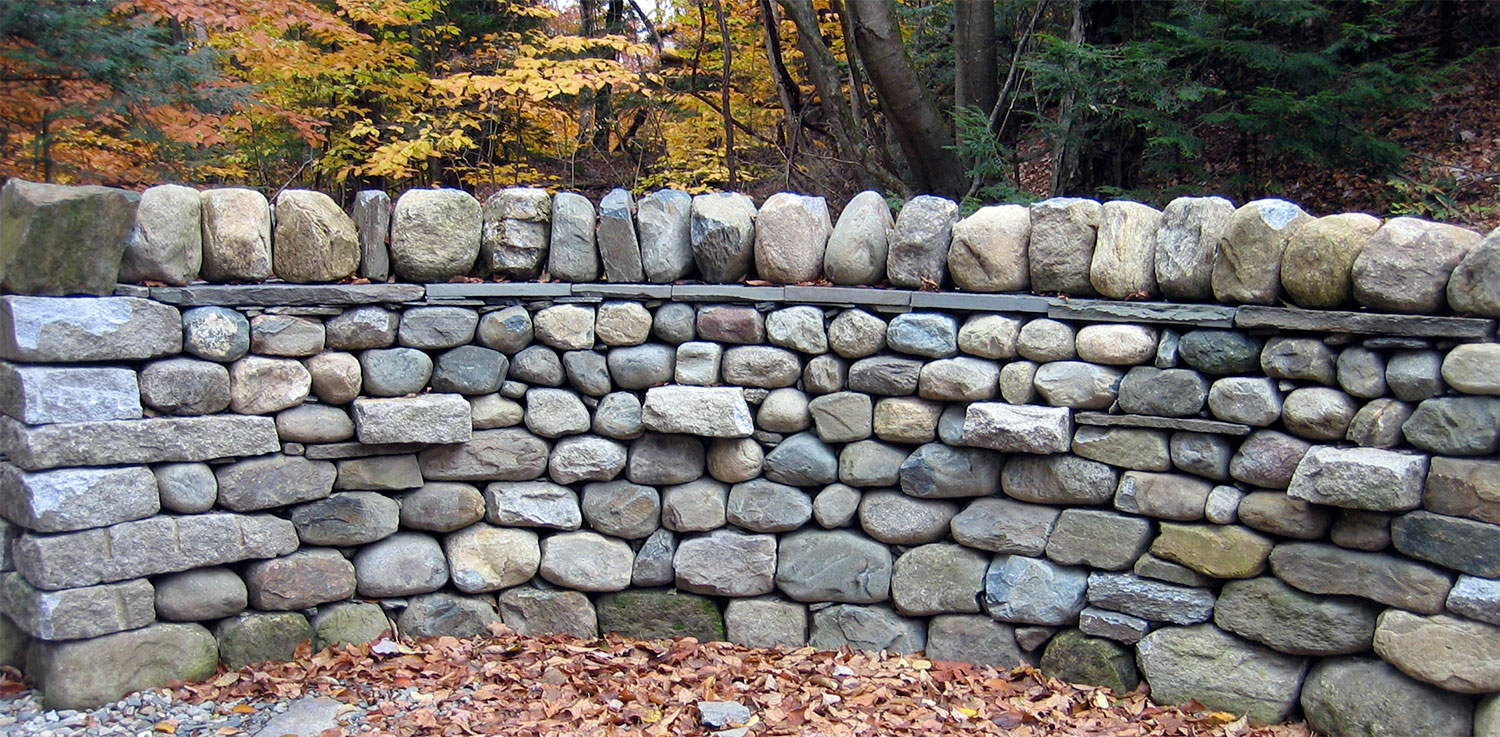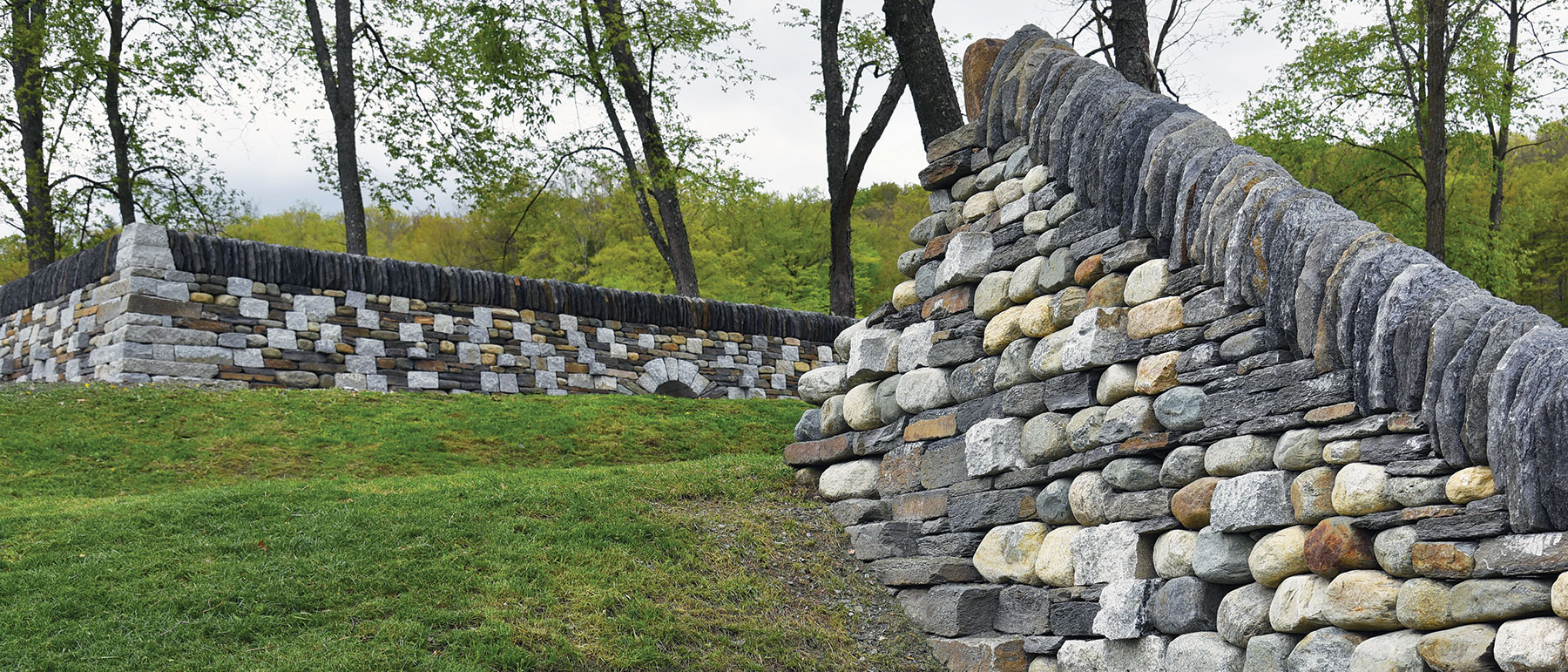
This is a group of some of my finest fence work that I submitted for review for the Dry Stone Walling Association (DSWA) of Great Britain that is known as the world standard for dry stone wall construction. Each wall was examined and reviewed and in some cases rebuilt to meet the building standards in the The DSWA Craftsman Certification Scheme. Each wall was designed to test my skill level while introducing the challenge of building curves, on unlevel ground, with several types of stone, and showing a variety of walling pattern styles. Efficiency is measured with a timed test where one must take apart and rebuild a freestanding wall 5 feet tall and 10 feet long including a feature like a step style within a 7 hr period.
Arch
Arches introduce the feeling of amazement when it comes to dry stone construction. With gravity always working against the structure, extra care must be taken when selecting the Granite arch stones. The random pattern of walling has a mix of white granite blocks, blue goshen mica schist, with a few round glacial til worked in. A goshen vertical cope top brings the wall to a clean level line.
Step-Stiles
Lunkie
Sometimes known as a Hog Hole, Lunkies are openings built into the lower part of a wall which allow farm animals to pass through the wall or fence without having to open a gate. The opening may be easily closed with a boulder or slab of stone. Even smaller gaps know as Smoots can be created to allow rabbits or hares through your wall. Built in courses with round glacial til, granite lintel, cover band, and copes.
Right Angle
This 90 degree corner in a wall is both captivating on the inside of the wall as much as out. The inside creates a warm protective feeling, while the outside clearly identifies the batter angle of the wall. Its strength comes with the long granite stones that are interlocking like the teeth of a zipper with stones running in alternate directions along the face of the wall. The random pattern of walling has a mix of white granite blocks, blue goshen mica schist, with a few round glacial til worked in. A goshen vertical cope top brings the wall to a clean level line.
30 Degrees
30 degrees refers to the grade or pitch of the ground to which the wall must be constructed. Large level stepped foundation stones protrude from the base of the wall known as a scarcement that helps distribute the weight of the wall and prevent erosion. The wall style is coursed level bedded Glacial til with two courses of through stones and a Goshen mica schist vertical cope.
Curved Wall
Curved walls offer a fun challenge for the builder and are widely used in the landscape to reduce formality or when necessary to build around a fixed object. Stones are more carefully selected with larger stones on the outside and smaller stones selected for the inside of the curve. Curved walls rely more on the focus of building by eye vs. using a string line for accuracy. Built with glacial til, granite through stones, and round glacial copes. The granite cheek-end was not part of the test.




